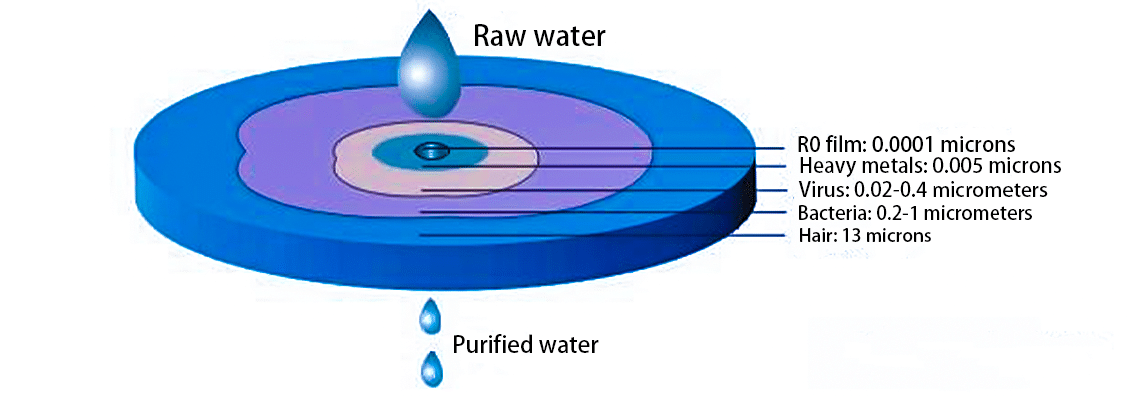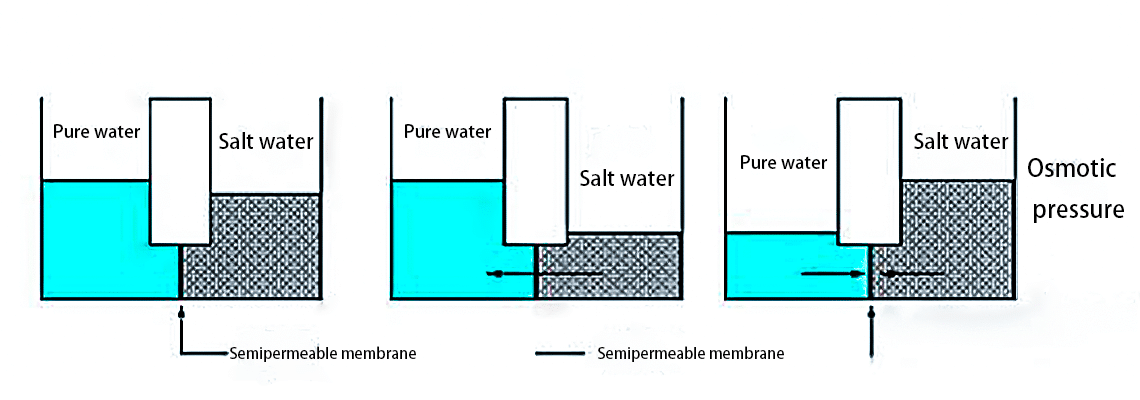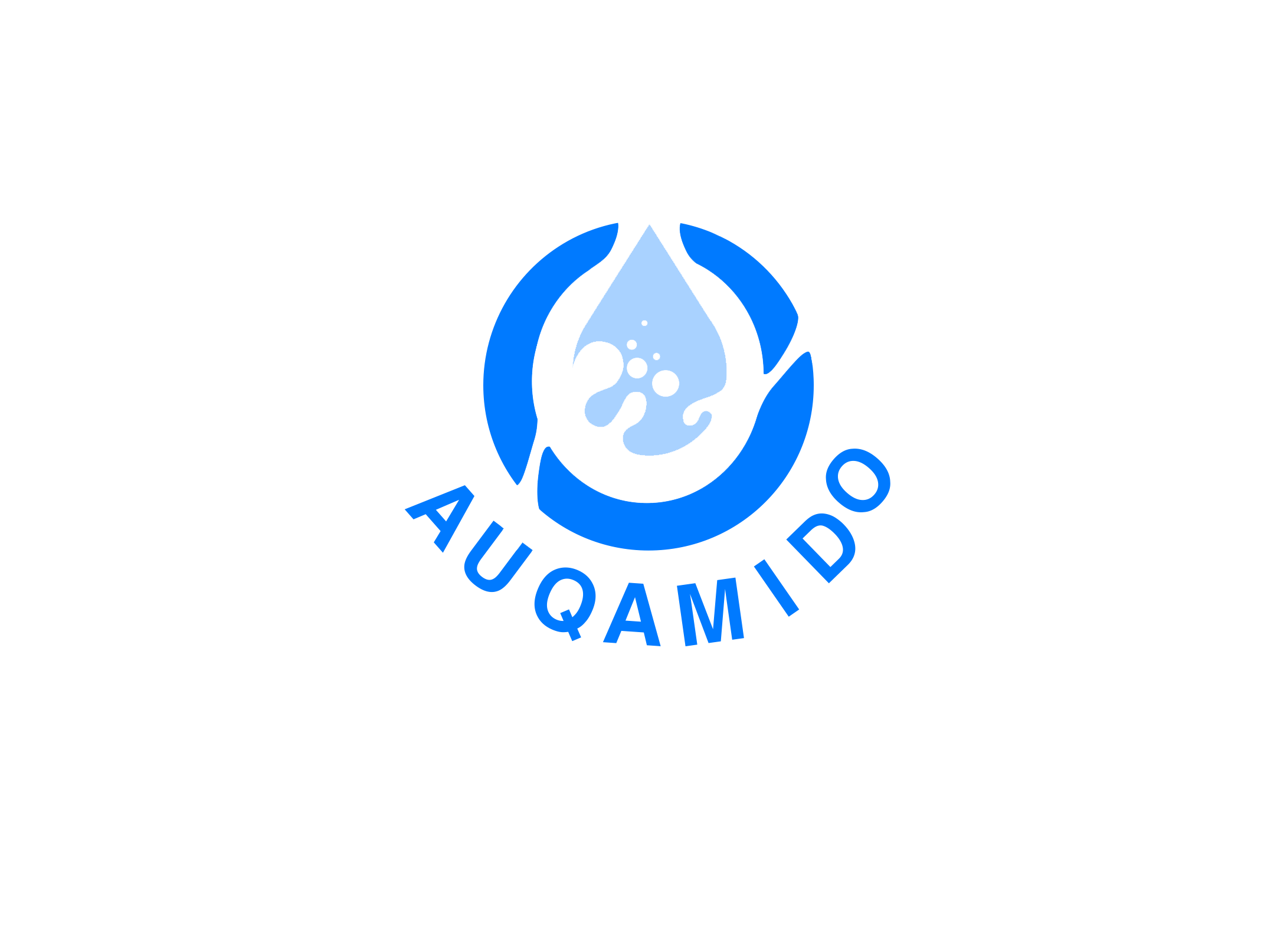What is an RO Water Treatment System?
An RO water treatment system, also known as a Reverse Osmosis water treatment system, is a membrane separation technology that was developed in the 1960s. Its working principle involves raw water passing through a reverse osmosis membrane under high pressure, allowing the solvent in the water to diffuse from a region of high concentration to low concentration. This process achieves separation, purification, and concentration. Since this movement is opposite to the natural direction of osmosis, it is called "reverse osmosis." A reverse osmosis water treatment system can remove bacteria, viruses, colloids, organic matter, and more than 98% of dissolved salts from the water.
Working Principle
Reverse Osmosis (RO) is a membrane separation process that relies on the selective permeability of RO membranes. By applying pressure greater than the natural osmotic pressure of a solution, RO allows solvent molecules—typically water—to pass through the membrane while retaining dissolved ions and other substances. This process effectively separates components in a liquid mixture.
Two essential conditions are required for RO separation:
The applied pressure must exceed the osmotic pressure of the solution (typically ranging from 1.5 to 10.5 MPa).
A semi-permeable membrane with high water permeability and strong selectivity must be used.
RO membranes have extremely fine surface pores, usually smaller than 1 nanometer, enabling them to achieve high removal rates for most inorganic salts, dissolved organic compounds, dissolved solids, microorganisms, and colloidal substances.
The working principle diagram of the reverse osmosis membrane is as follows:

The following figure shows the principle diagram of reverse osmosis and the conventional process flow chart:

A reverse osmosis system mainly consists of a high-pressure pump, RO membranes, and a control unit. The high-pressure pump increases the pressure of the feed water, allowing only water molecules to pass through the RO membrane. Other substances in the water—such as minerals, organic matter, and microorganisms—are effectively rejected by the membrane and flushed away with the high-pressure concentrate.
Common Problems and Solutions
Under normal circumstances, RO systems should be cleaned when the normalized flux decreases by 10–15%, the salt rejection rate drops by 10–15%, or the operating pressure and pressure differential between membrane stages increase by 10–15%. The cleaning frequency is directly related to the effectiveness of the system’s pretreatment. When the SDI15 (Silt Density Index) is less than 3, the system may require cleaning about four times per year. However, if the SDI15 is around 5, the cleaning frequency may need to be doubled. Ultimately, the appropriate cleaning schedule depends on the actual conditions at each project site.
1. How often should the reverse osmosis system be cleaned?
Under normal conditions, the RO system should be cleaned when the normalized flux decreases by 10–15%, the salt rejection rate drops by 10–15%, or the operating pressure and pressure differential between membrane stages increase by 10–15%. The cleaning frequency is directly related to the level of system pretreatment. When the SDI15 (Silt Density Index) is less than 3, cleaning may be required about four times per year. If the SDI15 is around 5, the cleaning frequency may need to be doubled. However, the cleaning frequency depends on the actual conditions at each project site.
2.Should reverse osmosis or ion exchange be used for general feedwater?
For many feedwater conditions, both ion exchange resins and reverse osmosis are technically feasible. The choice of process should be based on an economic comparison. Generally, the higher the salt content, the more economical reverse osmosis becomes, while ion exchange tends to be more economical at lower salt concentrations. With the widespread use of reverse osmosis technology, a combination process of reverse osmosis + ion exchange, multi-stage reverse osmosis, or reverse osmosis + other advanced demineralization technologies has become the recognized and more economically rational water treatment solution. For more in-depth information, please consult a representative from a water treatment engineering company.
3.How long do reverse osmosis membrane elements generally last?
The lifespan of a membrane depends on its chemical stability, physical stability of the element, cleanability, feedwater source, pretreatment, cleaning frequency, and operational management. Based on economic analysis, the typical lifespan is generally over 5 years.
4.What is the maximum allowable concentration of silica in the feedwater for reverse osmosis membranes?
The maximum allowable concentration of silica depends on temperature, pH, and the scale inhibitor used. Typically, without scale inhibitors, the maximum allowable concentration at the concentrate end is 100 ppm. However, some scale inhibitors allow a maximum concentration of silica in the concentrate to be as high as 240 ppm. Please consult with your scale inhibitor supplier for more specific information.
Application
1.Seawater Desalination
In regions with water scarcity or along coastal areas, RO systems are widely used for seawater and brackish water desalination. By applying high pressure, seawater or underground brackish water is forced through RO membranes, effectively removing salts and impurities, and converting it into freshwater suitable for human consumption or industrial use. This technology is particularly important in arid regions such as the Middle East and Africa, and serves as a primary means of freshwater supply for islands and ships.
2.Drinking Water Purification
In the residential sector, RO systems offer high-quality drinking water solutions for both households and communities. Household RO purifiers can be directly connected to the tap water supply and typically use a five-stage or multi-stage filtration process to remove residual chlorine, heavy metals, bacteria, viruses, and other harmful substances, ultimately delivering clean, safe, and great-tasting drinking water. In addition, many office buildings, schools, and residential complexes utilize centralized RO purification systems to provide purified water to entire buildings or communities, enhancing both convenience and quality of life for residents.
3.Industrial Water Treatment
In industrial production, RO systems play a vital role in ensuring water quality. The electronics and semiconductor industries require extremely high water purity standards, and reverse osmosis systems are used to produce ultrapure water for precision processes such as wafer and circuit board cleaning. In the pharmaceutical industry, RO systems combined with EDI (Electrodeionization) technology are used to produce purified water and water for injection that meet GMP standards. In the power industry, RO systems are applied for desalination pretreatment of boiler feed water to prevent scaling and corrosion, thereby extending equipment lifespan. Additionally, the food and beverage industry widely utilizes RO systems to purify raw water, ensuring hygienic and safe water use throughout the production process—for example, in brewing, dairy processing, and bottled water manufacturing lines.
4. Wastewater Reuse and Environmental Protection
Reverse osmosis technology also plays a significant role in environmental protection and water resource reuse. Large volumes of wastewater generated during industrial processes can be deeply purified by RO systems after proper pretreatment, allowing the reclaimed water to be reused for non-potable purposes such as cleaning, cooling, and production. This not only reduces water consumption costs for enterprises but also aligns with the principles of green and sustainable development. RO systems are especially common in high water-consuming industries such as textile dyeing, chemical manufacturing, and electroplating.
5. Laboratory and Medical Water Use
Laboratory analysis, water quality testing, and medical equipment cleaning all require extremely high-purity water. RO systems are often used as a primary filtration method, working in combination with technologies such as ion exchange, UV sterilization, and microfiltration to produce high-purity or ultrapure water. This level of water quality is essential for critical applications such as reagent preparation, analytical experiments, and surgical instrument cleaning, ensuring precision and safety in both laboratory and medical procedures.

